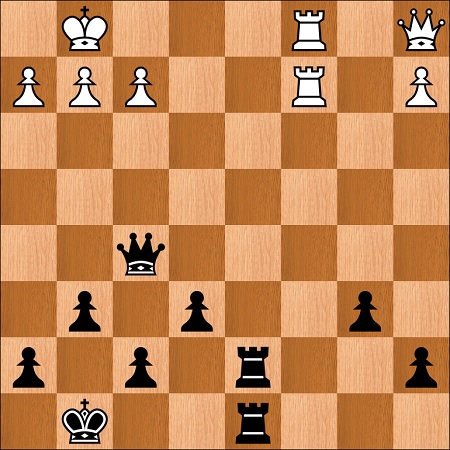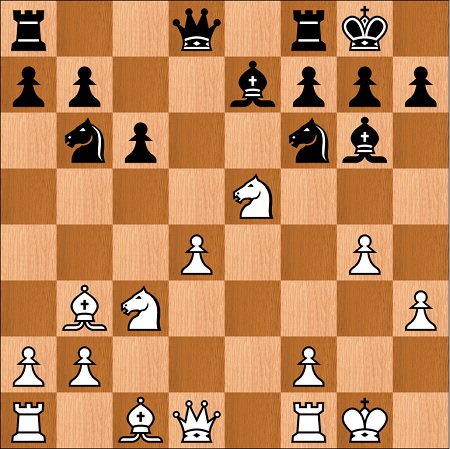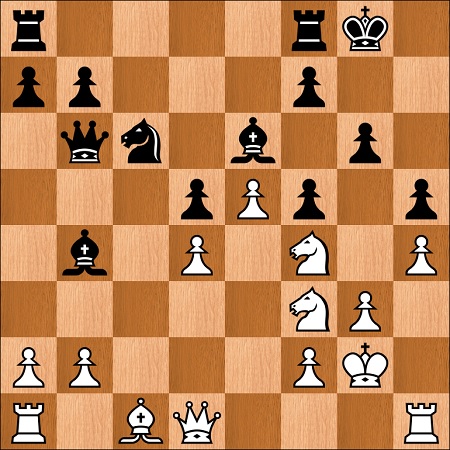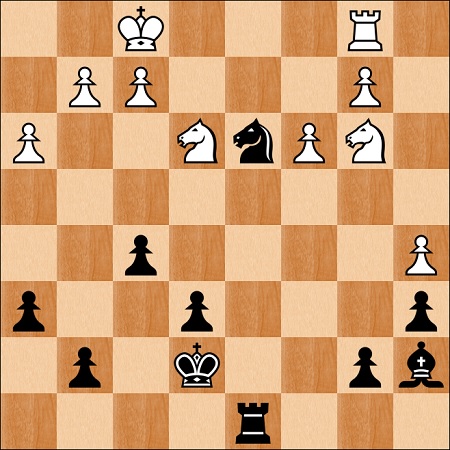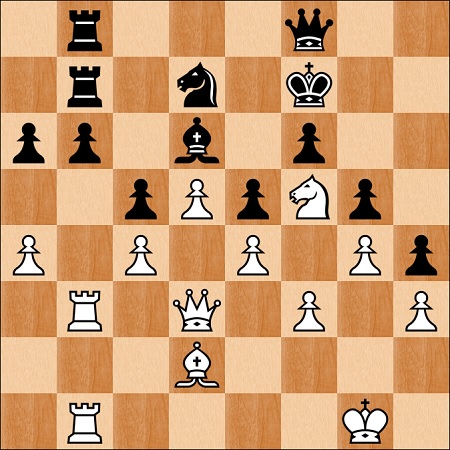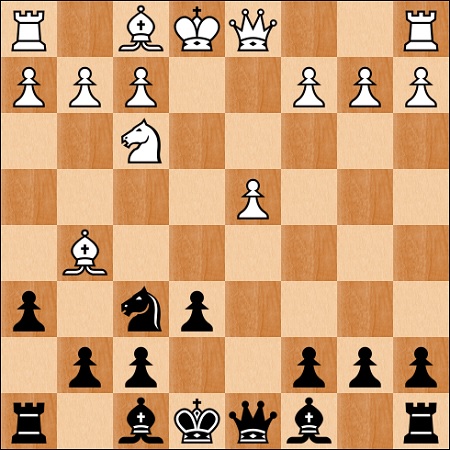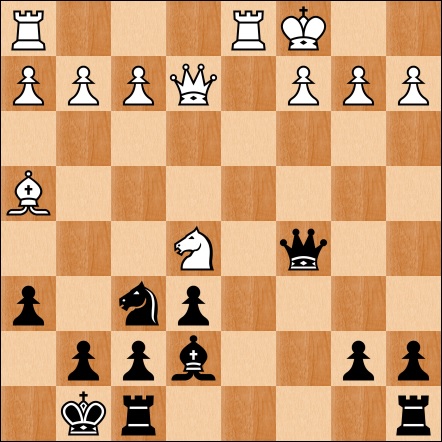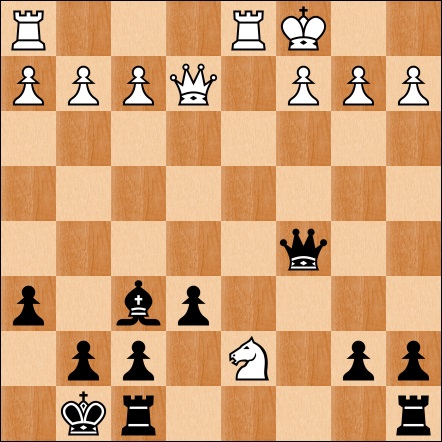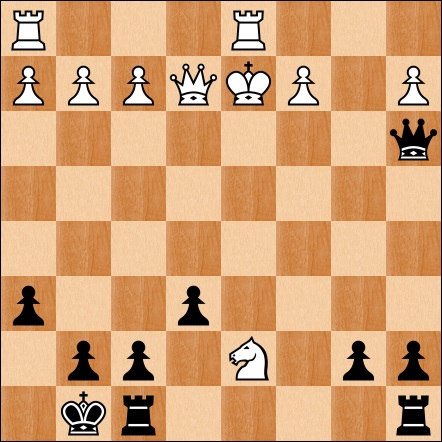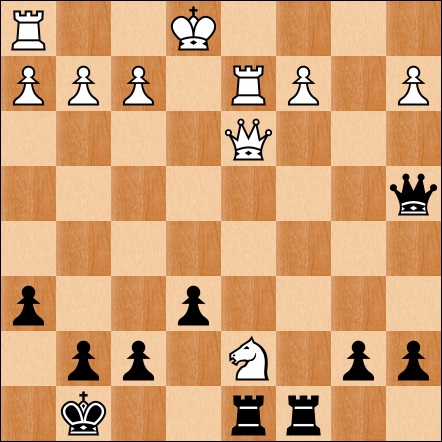The August clinic is out and features games from two lines of the French Defence, the King's Indian Attack (1.e4 e6 2.d3) and the Rubinstein Variation (1.e4 e6 2.d4 d5 3.Nd2 dxe4 4.Nxe4 Nd7). As usual the games were taken from the Tiger Chess Themed Training Tournaments on Lichess, which are run to provide the opportunity to practice key opening variations.
The most exciting game was the one played between Oldspeckledhen and Dandanmian in which the following position was reached. Black had just played 11...Nd5 (11...e5 was the right move) and it was White to play (see diagram).
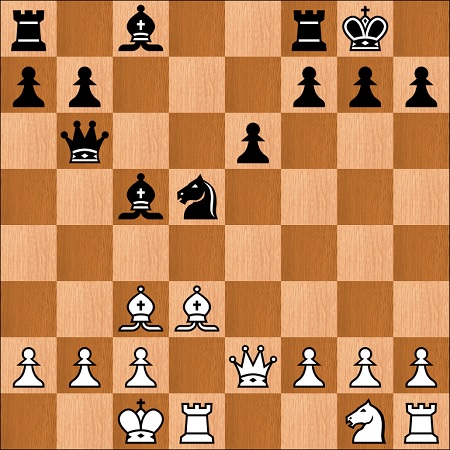
White opened up Black's king position with 12.Bxh7+ Kxh7 13.Qh5+ Kg8 14.Bxg7 , to set in motion a dangerous attack. After 14...Kxg7 15.Qg5+ Kh7 16.Rd3 Black should have played 16...e5, in the game there followed 16...Be3+? 17.fxe3 Rg8 18.Qh5+ Kg7 19.Nf3 Rh8 20.Qg5+ Kf8 21.Ne5 Qa5 22.Nxf7 Qxa2 23.Qd8+ Kg7 24.Qxh8+ Kxf7 25.Rf1+ Ke7 26.Qf8+ Kd7 27.e4 Qa1+ 28.Kd2 Qa5+ 29.c3 Qb5 30.Rf7+ Kc6 31.exd5+ exd5 32.Qe8+ Kb6 33.Qxb5+ Kxb5 34.Rxd5+ Kc6 35.Rd8 Be6 36.Rxa8 1-0
The Tigerchess.com Themed Training events are a great opportunity to practice key positions from regular openings, and are open to everyone who joins the Tiger Chess Team. Participating in these events helps players develop real insight into the openings played, above and beyond looking at them in a book or on a video.
Nigel Davies

